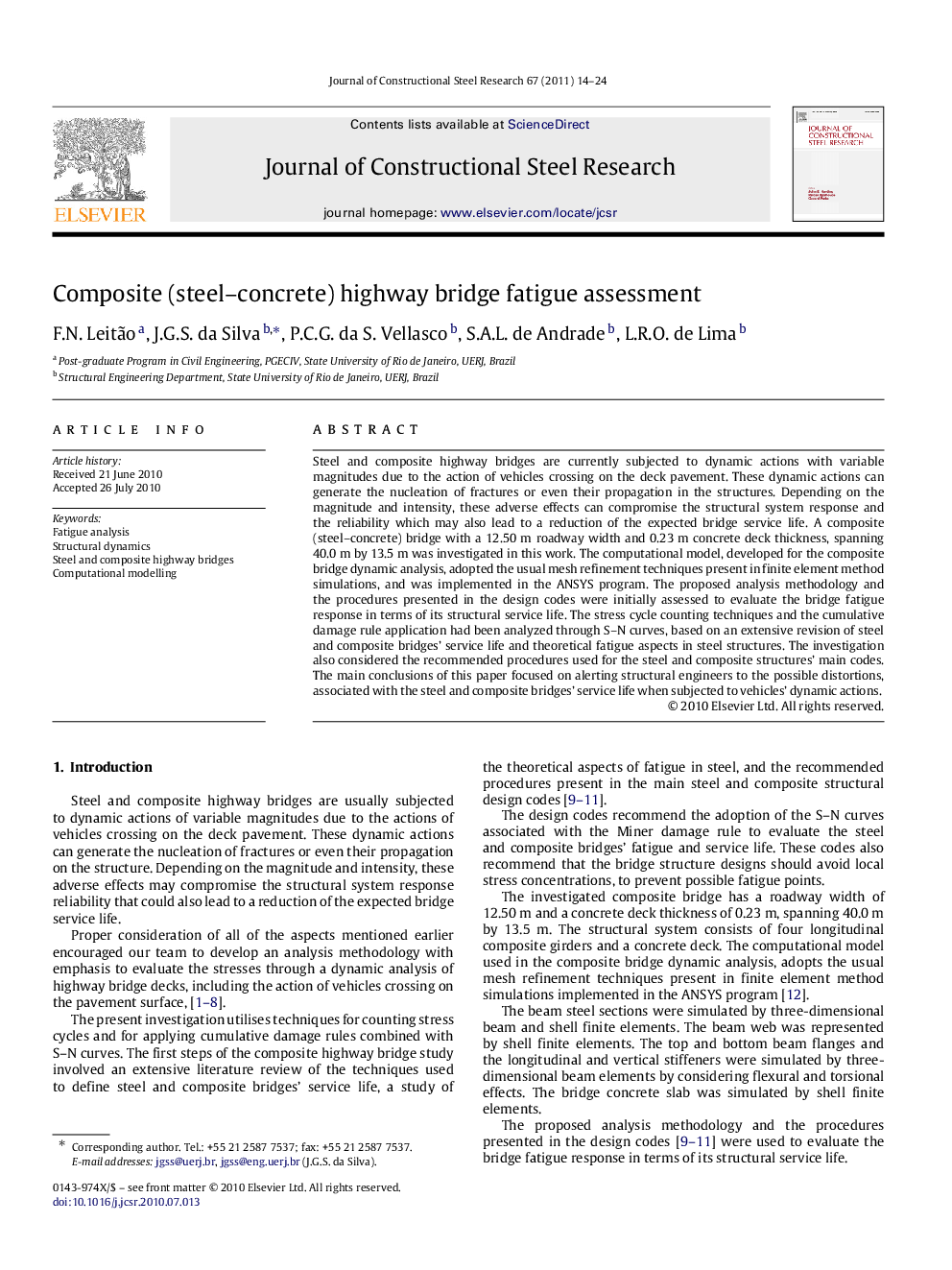| کد مقاله | کد نشریه | سال انتشار | مقاله انگلیسی | نسخه تمام متن |
|---|---|---|---|---|
| 285660 | 509210 | 2011 | 11 صفحه PDF | دانلود رایگان |

Steel and composite highway bridges are currently subjected to dynamic actions with variable magnitudes due to the action of vehicles crossing on the deck pavement. These dynamic actions can generate the nucleation of fractures or even their propagation in the structures. Depending on the magnitude and intensity, these adverse effects can compromise the structural system response and the reliability which may also lead to a reduction of the expected bridge service life. A composite (steel–concrete) bridge with a 12.50 m roadway width and 0.23 m concrete deck thickness, spanning 40.0 m by 13.5 m was investigated in this work. The computational model, developed for the composite bridge dynamic analysis, adopted the usual mesh refinement techniques present in finite element method simulations, and was implemented in the ANSYS program. The proposed analysis methodology and the procedures presented in the design codes were initially assessed to evaluate the bridge fatigue response in terms of its structural service life. The stress cycle counting techniques and the cumulative damage rule application had been analyzed through S–N curves, based on an extensive revision of steel and composite bridges’ service life and theoretical fatigue aspects in steel structures. The investigation also considered the recommended procedures used for the steel and composite structures’ main codes. The main conclusions of this paper focused on alerting structural engineers to the possible distortions, associated with the steel and composite bridges’ service life when subjected to vehicles’ dynamic actions.
Journal: Journal of Constructional Steel Research - Volume 67, Issue 1, January 2011, Pages 14–24